I am making axios calls to an API I have created(in Golang). The API seems to work as expected on Postman, but for some reason it doesn't work when I make the calls through React.
import React, {Component} from "react";
import Form from "./Form";
import Header from "./Header";
import axios from "axios";
let endpoint = "http://localhost:8000/";
class Dashboard extends Component {
constructor(props){
super(props)
this.state = {
currentRepository: '',
data: {},
}
this.setRepository = this.setRepository.bind(this)
}
componentDidMount(){
axios.get(
endpoint,
{
headers: {
"Content-Type": "application/json"
}
}
)
.then(res => {
console.log(res);
});
}
setRepository(url){
console.log(url)
this.setState({
currentRepository: url,
}, () => {
axios.put(
endpoint,
this.state.currentRepository, {
headers: {
"Content-Type": "application/json"
}
}
)
.then(res => {
this.setState({
data: res
})
console.log(res);
})
})
}
render(){
return (
<div className="m-5 border-2">
<Header></Header>
<Form setRepository={this.setRepository}></Form>
</div>
)
}
}
export default Dashboard;
I the error I get in console is,

Now, I double checked, and I have mentioned all the required Access Control options. A piece of my backend golang code:
func getHome(w http.ResponseWriter, r *http.Request) {
commitTimeStamps := getCommitTimeStamps(currentRepository)
commitTimeObjects := parseTimeStamps(commitTimeStamps)
w.Header().Set("Content-Type", "application/json")
w.Header().Set("Access-Control-Allow-Origin", "*")
w.Header().Set("Access-Control-Allow-Methods", "GET")
w.Header().Set("Access-Control-Allow-Headers", "Content-Type")
_ = json.NewEncoder(w).Encode(commitTimeObjects)
}
func updateRepository(w http.ResponseWriter, r *http.Request) {
var url struct {
URL string `json:"url"`
}
_ = json.NewDecoder(r.Body).Decode(&url)
currentRepository = parseURL(&url.URL)
// currentRepository looks like {bradtraversy reactcharts}
commitTimeStamps := getCommitTimeStamps(currentRepository)
commitTimeObjects := parseTimeStamps(commitTimeStamps)
// commitTimeObjects looks like [{2016-04-21 2} {2016-04-23 5} {2016-04-25 1}]
w.Header().Set("Content-Type", "application/json")
w.Header().Set("Access-Control-Allow-Origin", "*")
w.Header().Set("Access-Control-Allow-Methods", "PUT")
w.Header().Set("Access-Control-Allow-Headers", "Content-Type")
_ = json.NewEncoder(w).Encode(commitTimeObjects)
}
func main() {
router := mux.NewRouter()
router.Use(mux.CORSMethodMiddleware(router))
router.HandleFunc("/", getHome).Methods("GET", "OPTIONS")
router.HandleFunc("/", updateRepository).Methods("PUT", "OPTIONS")
http.ListenAndServe(":8000", router)
}
I cannot understand where the problem is, a little help would be amazing. Thank You.
UPDATE:
Replacing PUT, with POST works. But still cannot understand why PUT doesn't work.